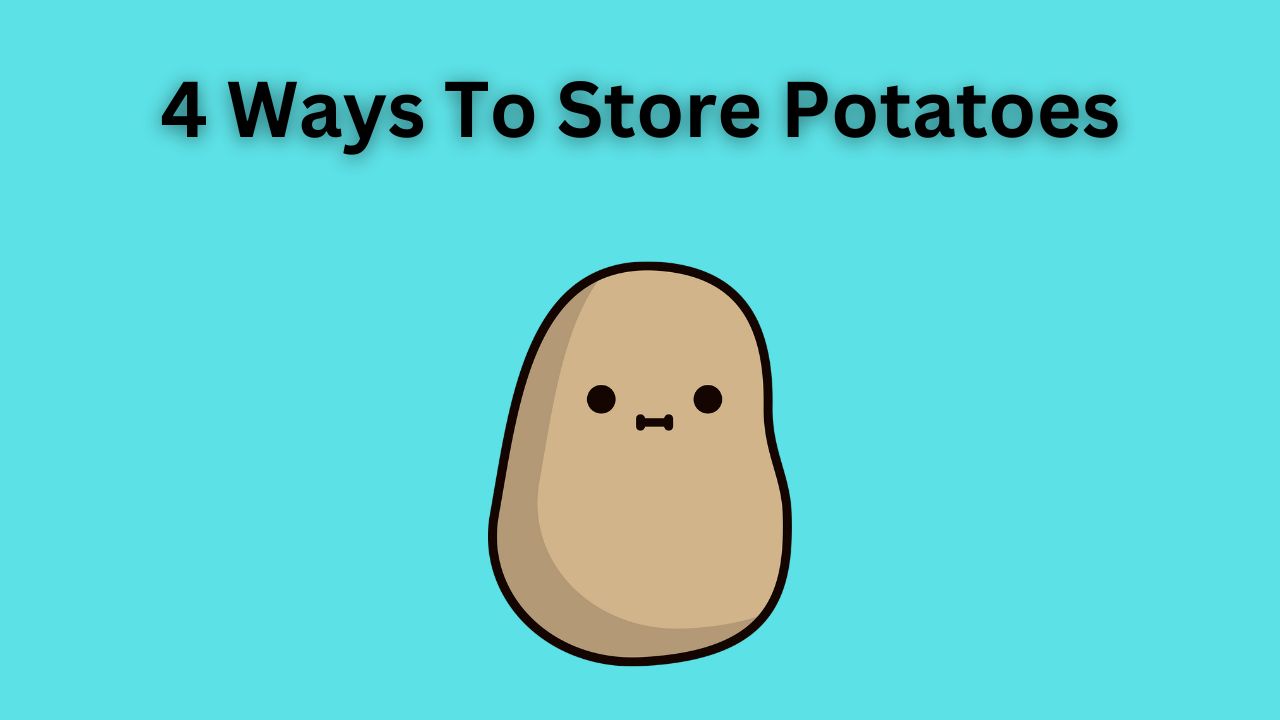How to Store Potatoes: 4 Best Ways
Potatoes are a staple in many households worldwide, prized for their versatility and nutritional value. However, improper storage can lead to premature spoilage, sprouting, or loss of flavor.
Learning how to store potatoes correctly can help prolong their freshness and ensure you get the most out of this humble yet essential vegetable. In this guide, we’ll explore various methods and tips for how to store potatoes effectively.
Understanding Potato Storage Needs
Before explaining you specific storage methods, it’s crucial to understand the basic requirements for storing potatoes. Potatoes thrive in cool, dark, and well-ventilated environments.
Exposure to light can cause potatoes to turn green and develop solanine, a compound that can be toxic in large quantities. Additionally, excess moisture can promote rotting, while too much warmth can trigger sprouting.
Keeping these factors in mind will help you choose the best storage method for your potatoes.
Proper Preparation Before Storage
Proper preparation plays a vital role in extending the shelf life of potatoes. Follow these steps before storing your potatoes:
- Inspect for Damage: Before storing, carefully inspect each potato for any signs of bruising, cuts, or sprouting. Remove any damaged potatoes to prevent them from spoiling the rest.
- Cure Potatoes (Optional): If you’ve harvested fresh potatoes from your garden, consider curing them before storage. Curing involves drying the potatoes in a well-ventilated area for a few days, which toughens their skins and helps prolong their shelf life.
- Avoid Washing: Resist the urge to wash potatoes before storing them. Washing can remove the protective layer on the skin and introduce excess moisture, making them more prone to spoilage. Instead, brush off any dirt gently with a soft brush or cloth.
Best Storage Methods for Potatoes
1. Root Cellar Storage
Root cellars have been used for centuries to store root vegetables like potatoes. If you have access to a root cellar or a cool, dark basement, this is one of the best options for long-term potato storage.
- Ideal Conditions: Maintain a temperature between 45°F and 50°F (7°C to 10°C) with high humidity levels (around 90%). Ensure good ventilation to prevent the buildup of excess moisture.
- Storage Containers: Store potatoes in breathable containers such as burlap sacks, wooden crates, or ventilated plastic bins. Avoid plastic bags, as they can trap moisture and promote rotting.
2. Pantry or Cupboard Storage
For short to medium-term storage, a pantry or cupboard can suffice, as long as it meets the necessary conditions of darkness and ventilation.
- Location: Choose a cool, dark spot away from heat sources such as stoves or direct sunlight. Avoid storing potatoes near onions, as onions emit gases that can accelerate sprouting.
- Storage Containers: Use mesh bags, paper bags, or cardboard boxes to store potatoes in the pantry. Again, avoid plastic bags and containers that trap moisture.
3. Refrigerator Storage (Short-Term Only)
While refrigerators offer a cool environment, they are not the ideal storage option for potatoes due to their low humidity levels and tendency to turn starches into sugars, affecting flavor and texture.
- Short-Term Storage Only: If you must store potatoes in the refrigerator, keep them in the vegetable crisper drawer. Ensure they are dry and well-ventilated to minimize moisture buildup.
- Use Within a Week: Refrigerated potatoes should be used within a week to prevent the conversion of starches to sugars, which can alter their taste and texture.
4. Freezing Potatoes (As a Last Resort)
Freezing potatoes is not recommended for storing whole raw potatoes, as freezing can cause their cell structure to break down, resulting in a mushy texture when thawed. However, you can freeze cooked potatoes for future use in soups, stews, or mashed potatoes.
- Preparation: Cook potatoes in your preferred method (boiling, roasting, or mashing) before freezing. Allow them to cool completely before transferring to airtight containers or freezer bags.
- Use Within 3 Months: Frozen cooked potatoes should be used within three months for the best quality.
Checking and Rotating Potatoes
Regardless of the storage method you choose, it’s essential to check your potatoes regularly for any signs of sprouting, rotting, or decay. Remove any spoiled potatoes immediately to prevent them from affecting the rest.
Additionally, rotate your potato supply regularly, using older potatoes first to ensure nothing goes to waste.
Conclusion: How to Store Potatoes
Learning how to store potatoes properly is key to maintaining their freshness and flavor for as long as possible. Whether you have a root cellar, pantry, or refrigerator, there’s a storage method suitable for every household.
By following the tips outlined in this guide, you can ensure your potatoes stay delicious and nutritious for weeks to come.
Have any additional tips for storing potatoes? Share them in the comments below!

